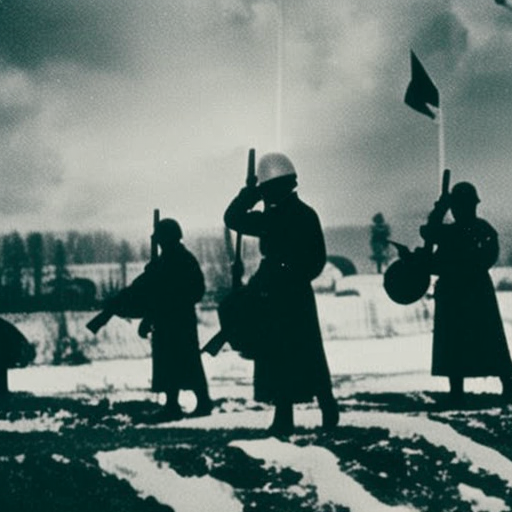Russian Civil War: A Struggle for Power and Ideology
The Russian Civil War was a conflict that took place in Russia from 1918 to 1922, following the Bolshevik Revolution and the end of World War I. It was a complex and multifaceted struggle for power and ideology between various factions, including the Bolsheviks, the White Army, and other anti-Bolshevik groups.
Causes of the Russian Civil War
The Russian Civil War was primarily fueled by political, social, and economic factors. The Bolsheviks, led by Vladimir Lenin, had seized power in the October Revolution of 1917 and established a socialist government. However, their policies, such as the nationalization of industry and land redistribution, faced opposition from various groups, including the bourgeoisie, aristocracy, and other socialist factions.
Key Players
The main factions involved in the Russian Civil War were the Bolsheviks, who formed the Red Army, and the anti-Bolshevik forces, collectively known as the White Army. The White Army consisted of a diverse range of groups, including monarchists, liberals, and socialists who opposed the Bolshevik regime. Additionally, there were also regional nationalist movements, such as the Ukrainian People’s Republic and the Baltic states, which sought independence from Russia.
Course of the Conflict
Early Stages
The Russian Civil War began in 1918, with the Bolsheviks facing immediate challenges from both internal and external forces. Internally, they faced opposition from anti-Bolshevik groups, who sought to overthrow the Bolshevik government. Externally, several foreign powers, including Britain, France, Japan, and the United States, intervened in the conflict to support the anti-Bolshevik forces.
Red Army Advancements
Despite these challenges, the Red Army gradually gained the upper hand in the conflict. Under the leadership of Leon Trotsky, the Red Army was able to consolidate its forces and implement effective military strategies. The Red Army’s control over key industrial centers, transportation networks, and communication lines proved crucial in their advancements.
White Army Fragmentation
In contrast, the White Army was plagued by internal divisions and lacked a unified command structure. The various factions within the White Army had differing goals and ideologies, making it difficult for them to coordinate their efforts effectively. This fragmentation weakened their overall military capabilities and hindered their ability to challenge the Red Army.
Foreign Intervention
Foreign intervention in the Russian Civil War further complicated the conflict. While the foreign powers initially aimed to prevent the spread of communism, their involvement often exacerbated the situation. The interventionist forces faced logistical challenges and struggled to coordinate their efforts, leading to limited success in their attempts to support the White Army.
Outcome and Impact
Bolshevik Victory
By 1922, the Red Army had emerged victorious in the Russian Civil War. The Bolsheviks, under the leadership of Lenin, had successfully defended their regime and consolidated their power. The establishment of the Soviet Union marked the beginning of a new era in Russian history, with the Bolsheviks implementing their socialist policies and centralizing power.
Human and Economic Costs
The Russian Civil War had a devastating impact on the country. The conflict resulted in widespread destruction, loss of life, and economic collapse. Estimates suggest that millions of people died during the war, both as a result of direct combat and the subsequent famine and disease outbreaks.
Legacy
The Russian Civil War had a profound and lasting impact on Russia and the world. It solidified the Bolshevik regime’s control over Russia and set the stage for the establishment of the Soviet Union. The war also contributed to the rise of Joseph Stalin, who would go on to become the leader of the Soviet Union and implement a period of intense industrialization and collectivization.
In conclusion, the Russian Civil War was a complex and brutal conflict that shaped the course of Russian history. It was a struggle for power and ideology between the Bolsheviks and various anti-Bolshevik groups. The Red Army’s advancements, the fragmentation of the White Army, and foreign intervention all played significant roles in determining the outcome of the war. The Bolshevik victory led to the establishment of the Soviet Union and had far-reaching consequences for Russia and the world.












